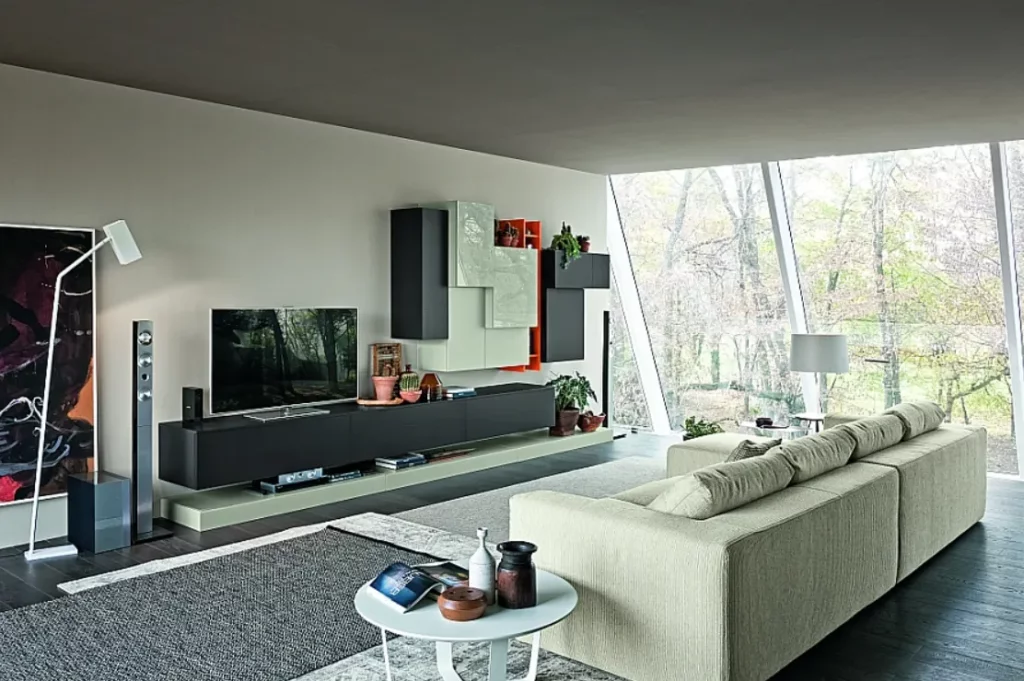In recent years, the concept of the modular living room has moved from niche trend to mainstream must-have. As our lifestyles evolve—becoming more flexible, fast-paced, and personalized—so too do our interiors. Modular furniture, particularly in living rooms, has become the embodiment of modern convenience and thoughtful design. It’s no surprise that more people are talking about it, investing in it, and sharing their experiences online.
So, what makes modular living rooms such a hot topic? The answer lies in their remarkable ability to adapt, their smart use of space, and their aesthetic versatility.
The Rise of the Modular Lifestyle
Today’s homes must do more than ever before. Living rooms double as home offices, yoga studios, guest rooms, and sometimes even classrooms. Traditional furniture simply wasn’t designed for this kind of multifunctional living. Enter the modular sofa: an arrangement of individual components that can be configured and reconfigured to suit your space, your style, and your needs.
A modular living room setup allows homeowners to easily move, add, or remove pieces. Need more seating for a movie night? Add an extra armless section. Hosting overnight guests? Convert your chaise into a sleeper. Moving to a new apartment? Rearrange your setup to fit a totally different layout. This kind of flexibility is incredibly appealing, particularly to urban dwellers and young families.
Design That Grows With You
One of the most attractive features of modular furniture is how it evolves alongside your lifestyle. Whether you’re expanding your household, downsizing, or simply refreshing your interior, modular pieces make it easy to adapt without needing to start from scratch.
This adaptability is part of what has driven the positive buzz online. Shoppers often highlight in Coleman Furniture reviews how simple it is to customize their modular selections. Many buyers appreciate being able to start with a basic configuration and then build on it as their needs grow or change. This kind of long-term usability makes modular living room furniture not just a smart buy, but a sustainable one as well.
Smart Use of Space
Space is a luxury, and for many people, it’s limited. Modular living room designs are inherently efficient. They allow for better traffic flow, smarter organization, and more purposeful living.
Storage-integrated modules, for example, combine form and function. Ottomans that lift open to hide blankets, chaises that store books and games, or sectional arms with built-in USB ports—these aren’t future ideas. They’re current offerings from many reputable furniture brands. A growing number of people are choosing these smart additions because they help reduce clutter without compromising on comfort or design.
Coleman Furniture, among other popular retailers, has leaned into this demand by offering well-reviewed modular collections that prioritize comfort and innovation. The praise isn’t just about looks—buyers frequently comment on how much more usable their space feels with a modular setup in place.
Style Without Sacrifice
In the past, flexibility often meant sacrificing design. Modular furniture was seen as clunky or unattractive—built more for function than beauty. That’s no longer the case. Today’s modular living room pieces are available in a wide range of styles, colors, and materials. Whether you’re after a sleek, modern aesthetic or something cozier and traditional, you’ll find options that don’t compromise your vision.
Many homeowners are mixing and matching textures and shapes to create layered, dynamic looks that feel personal and curated. This mix-and-match appeal extends beyond sofas, too. Modular shelving, coffee tables, and media units are also on the rise, giving consumers the freedom to build a cohesive look that fits their specific room dimensions and style preferences.
Easy to Own, Easier to Live With
Modular furniture often comes with the added benefit of ease—ease of delivery, ease of assembly, and ease of care. Since pieces are smaller and more maneuverable than large, fixed sofas or sectionals, they can more easily fit through tight doorways or stairwells. For people living in apartments or older homes with tricky layouts, this can be a huge relief.
Assembly is typically more straightforward as well. Because you’re putting together manageable segments, there’s less heavy lifting and less frustration. And when it comes time to clean, modular pieces are often designed with removable, washable covers or simple maintenance in mind—another reason why busy families and pet owners are drawn to them.
A Community Conversation
What’s perhaps most telling about the rise of modular living rooms is how much people are talking about them. Social media platforms are filled with layout hacks, room transformation videos, and reviews of favorite brands. Homeowners love sharing how they’ve personalized their modular setups—creating L-shaped lounges, dual-sofa entertainment zones, or ultra-minimalist media corners.
This kind of online enthusiasm has helped spread the word quickly. Whether you’re browsing interior design forums or scrolling through home influencers’ feeds, modular furniture frequently makes an appearance—and for good reason. The excitement isn’t just about a trend; it’s about finding furniture that works with your life, not against it.
Final Thoughts: Why It Matters
Modular living rooms aren’t just a style choice—they’re a lifestyle upgrade. They cater to how people actually live today, offering flexibility, comfort, and style in one customizable package. As more consumers prioritize personalization, value, and functionality, modular options are becoming not just popular but essential.
If you’re considering upgrading your living space, it’s worth exploring what modular designs can offer. Check out collections from trusted retailers, read real customer experiences—like the many detailed Coleman Furniture reviews—and consider how a modular setup could bring both beauty and practicality into your home. With the right pieces, your living room can be a space that grows and adapts with you, year after year.
